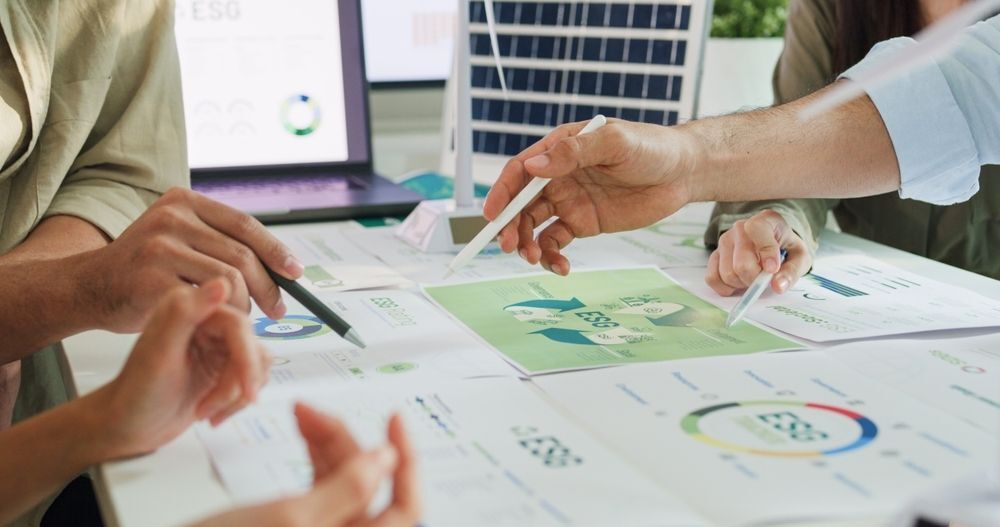
How to Incorporate Sustainable Materials in Conceptual Designs
As the world shifts towards eco-conscious living, the use of sustainable materials in conceptual designs is no longer a luxury but a necessity. Designers, architects, and engineers are seeking innovative ways to integrate materials that reduce environmental impact while maintaining aesthetic and functional integrity. Sustainable materials not only lower carbon footprints but also promote healthier living spaces and long-term resource efficiency.
In cities like Ann Arbor, MI, where environmental awareness is at the forefront of community initiatives, designers are actively exploring methods to incorporate eco-friendly alternatives. Conceptual designs that embrace sustainable materials can set new industry standards and inspire future generations of designers to think about the environmental consequences of their work from the earliest stages of development.
Selecting the Right Sustainable Materials for Your Conceptual Design
Choosing sustainable materials requires careful consideration of various factors, including source sustainability, durability, and recyclability. Materials such as reclaimed wood, bamboo, recycled metal, and biodegradable composites are widely used in modern conceptual designs. The selection process should prioritize materials with minimal environmental impact, ensuring they contribute to a circular economy rather than depleting natural resources.
For instance, reclaimed wood not only reduces deforestation but also adds character and history to design elements. Bamboo, known for its rapid growth and renewability, is an excellent alternative for flooring and furniture. Recycled metals, such as aluminum and steel, provide durability while significantly lowering the energy consumption associated with mining new materials. Bio-based plastics and composite materials derived from natural fibers further enhance sustainability efforts in conceptual designs, making them ideal choices for forward-thinking projects.
Implementing Sustainable Materials in Various Design Phases
Integrating sustainable materials into conceptual designs starts from the initial brainstorming stages. Designers must assess the feasibility of using eco-friendly resources without compromising functionality or aesthetics. The early phases of design should involve sustainability assessments, where material choices are evaluated based on their life cycle impact, embodied energy, and potential for repurposing.
One practical approach is to incorporate digital modeling tools that simulate the environmental impact of materials. These tools allow designers to make informed decisions and optimize material selection for sustainability. In Ann Arbor, MI, many architecture and design firms are adopting such technology to enhance their commitment to green building practices. Collaboration with local suppliers and manufacturers who prioritize sustainability can also ensure that conceptual designs translate into real-world applications with minimal ecological footprint.
Overcoming Challenges in Sustainable Material Integration
Despite the benefits of sustainable materials, integrating them into conceptual designs can present challenges. Availability, cost, and structural limitations often create hurdles for designers. However, with increasing global demand for sustainability, new advancements in material science are making eco-friendly options more accessible and cost-effective.
One significant challenge is the perception that sustainable materials may not be as durable as conventional options. To address this, designers can conduct performance testing and collaborate with material scientists to develop hybrid materials that combine strength and sustainability. Additionally, government incentives and sustainability certifications, such as LEED (Leadership in Energy and Environmental Design), can help offset costs and encourage the adoption of eco-friendly materials. By leveraging these resources, designers in Ann Arbor, MI, and beyond can create conceptual designs that are both environmentally responsible and economically viable.
The Future of Sustainable Materials in Conceptual Design Innovation
The future of conceptual designs is undoubtedly intertwined with sustainable materials. As technology advances, bioengineered materials, such as mycelium-based composites and algae-derived bioplastics, are emerging as groundbreaking alternatives to traditional construction and design elements. These materials offer carbon-neutral or even carbon-negative properties, further contributing to the fight against climate change.
Additionally, the increasing emphasis on circular economy principles will push designers to rethink how materials are sourced, used, and repurposed. Innovations in 3D printing with biodegradable and recycled materials will revolutionize the way conceptual designs are brought to life, allowing for precise resource allocation and minimal waste production.
Conclusion
In progressive cities like Ann Arbor, MI, where sustainability is a priority, the integration of sustainable materials in conceptual designs is not just a trend but a movement shaping the future of design. As more industries adopt green initiatives, the role of designers in championing sustainability will become increasingly significant. By continuously exploring new materials, techniques, and technologies, conceptual designs can lead the way in creating a more sustainable and harmonious built environment.
Need a Sign Company in Ann Arbor, MI?
Here at Signs In 1 Day, we’ve proudly served the Ann Arbor community for over 31 years, offering top-notch signage and printing solutions that meet your unique needs. From custom logo letter cutting to vehicle wraps, banners, and more, we’re here to bring your vision to life with prompt, high-quality service. As a locally-owned, owner-operated business, we’re committed to delivering exceptional customer care every step of the way. Contact us today or drop by to see how we can help elevate your brand and why we’ve been trusted for over three decades!
